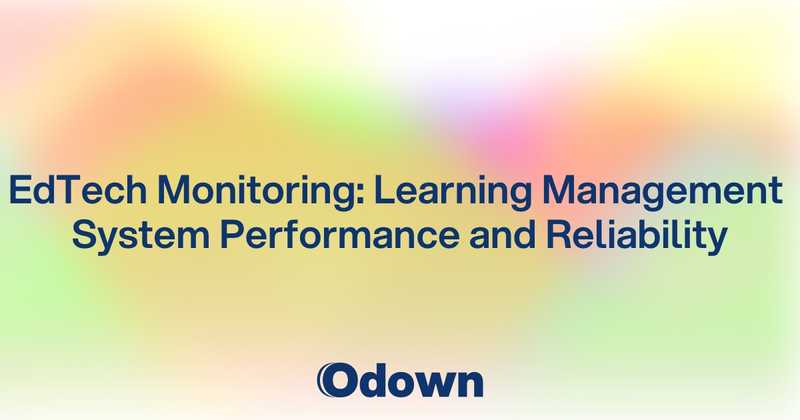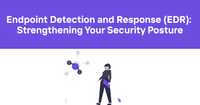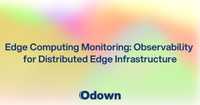EdTech Monitoring: Learning Management System Performance and Reliability
Your online learning platform supports 100,000 students across dozens of schools. Your monitoring dashboards show everything running smoothly - servers are responsive, databases are healthy, and error rates are low. Then Monday morning arrives and your support team gets flooded with calls. Students can't submit assignments before deadlines. Video lectures are buffering constantly. Quiz systems are timing out during finals week.
You investigate and discover the problem: your monitoring tracked technical infrastructure health but missed the student experience issues that actually determine educational success. Assignment uploads failed due to file size limits that only triggered during peak usage. Video streaming worked fine for desktop users but failed on mobile devices that many students rely on. Quiz timeouts affected students with slower internet connections who couldn't complete assessments within technical timeout periods.
Educational technology monitoring requires understanding that system failures don't just affect user productivity - they affect learning outcomes, academic progress, and educational equity. Students often have limited technology resources, diverse network conditions, and time-sensitive academic deadlines that create unique requirements for educational platform reliability.
Learning Management System (LMS) Monitoring Essentials
LMS monitoring must ensure reliable access to educational content and functionality while supporting diverse student populations with varying technical capabilities.
Core LMS Functionality Monitoring
LMS platforms provide essential educational services that require comprehensive monitoring to ensure academic continuity.
Assignment submission monitoring tracks the complete workflow from student assignment creation through submission and instructor grading, identifying bottlenecks that might prevent timely academic progress.
Grade book functionality monitoring ensures that grades are recorded accurately and remain accessible to students and instructors when needed for academic decision-making.
Discussion forum monitoring tracks student collaboration features and ensures that discussion platforms remain available for peer learning and instructor communication.
Calendar and scheduling monitoring tracks academic calendar integration and ensures that students receive appropriate notifications about deadlines, events, and schedule changes.
Course enrollment monitoring tracks student registration processes and ensures that students can access courses they're enrolled in without technical barriers.
Multi-Tenant Educational Environment Monitoring
Educational institutions often serve diverse populations with different technical requirements and usage patterns.
Institution-level performance monitoring tracks how LMS performance varies across different schools, departments, or academic programs that share infrastructure.
Course-level monitoring tracks performance for individual courses and identifies courses with unique technical requirements or higher resource usage.
Semester and academic cycle monitoring accounts for predictable usage patterns that correlate with academic calendars, including registration periods, finals weeks, and semester transitions.
Student population segmentation monitoring tracks how LMS performance affects different student demographics, including traditional students, adult learners, and international students with different technology access.
Integration and Third-Party Service Monitoring
LMS platforms often integrate with numerous educational tools and services that affect overall platform reliability.
Single sign-on (SSO) monitoring tracks authentication integration with institutional identity systems and ensures students can access educational resources without authentication barriers.
Library system integration monitoring tracks access to digital resources, academic databases, and research tools that support student learning.
Plagiarism detection service monitoring tracks integration with academic integrity tools and ensures timely processing of student submissions.
Video conferencing integration monitoring tracks virtual classroom capabilities and ensures reliable access to synchronous learning opportunities.
External tool integration monitoring tracks LTI (Learning Tools Interoperability) connections with specialized educational software and content providers.
Academic Workflow Monitoring
Educational workflows have unique timing requirements that differ from typical business applications.
Deadline-sensitive workflow monitoring tracks assignment submissions, quiz completions, and other time-sensitive academic activities that affect student grades and progress.
Bulk operation monitoring tracks mass operations like grade imports, student enrollment updates, and course content publishing that often occur during specific academic periods.
Backup and recovery monitoring for academic data ensures that student work and institutional records remain protected and recoverable.
Academic reporting monitoring tracks institutional reporting capabilities that support compliance with educational regulations and accreditation requirements.
Student Experience Monitoring: Performance and Accessibility
Student experience monitoring must account for diverse student populations, varying technology access, and the educational context that affects technology tolerance.
Performance Across Diverse Devices
Students access educational platforms from a wide variety of devices with different capabilities and constraints.
Mobile device performance monitoring tracks LMS functionality on smartphones and tablets that many students use as primary computing devices.
Low-bandwidth performance monitoring ensures that educational content remains accessible for students with limited internet connectivity.
Older device compatibility monitoring tracks platform performance on older computers and devices that students might use due to economic constraints.
Accessibility technology monitoring ensures that LMS platforms work correctly with screen readers, voice recognition software, and other assistive technologies.
Cross-browser compatibility monitoring tracks performance across different web browsers and versions that students might use.
Educational Equity and Access
Educational technology monitoring must support educational equity by ensuring that technical barriers don't prevent student success.
Digital divide monitoring tracks how performance differences affect students with varying levels of technology access and digital literacy.
Geographic performance monitoring identifies regional differences that might affect rural or international students differently than urban students.
Offline capability monitoring tracks educational content that students can access without continuous internet connectivity.
Low-resource mode monitoring ensures that educational platforms can operate effectively on devices with limited processing power or memory.
Student Engagement and Usage Patterns
Educational monitoring should track student engagement patterns that indicate both technical performance and educational effectiveness.
Learning analytics integration correlates technical performance with educational outcomes and student engagement metrics.
Session duration monitoring tracks how long students engage with educational content and identifies technical issues that might interrupt learning.
Feature adoption monitoring tracks which LMS features students use most frequently and identifies features that might need optimization or better user experience design.
Help desk correlation monitoring tracks how technical issues affect student support requests and identifies common problems that need proactive resolution.
Student retention correlation monitoring tracks how technical problems might affect student continuation and academic success.
Accessibility and Accommodation Monitoring
Educational platforms must provide equal access to students with disabilities and varying learning needs.
Screen reader compatibility monitoring ensures that educational content works correctly with assistive technologies used by visually impaired students.
Keyboard navigation monitoring tracks platform usability for students who cannot use mouse or touch interfaces.
Caption and transcript monitoring ensures that video content includes appropriate accessibility features for hearing-impaired students.
Language support monitoring tracks multilingual capabilities for international students and English language learners.
Accommodation integration monitoring tracks how platforms support individualized educational accommodations required by disability services.
Educational Content Delivery Monitoring: Video and Interactive Media
Educational content delivery requires specialized monitoring because educational media has different usage patterns and quality requirements than entertainment content.
Video Streaming and Educational Media
Educational video content requires reliable delivery that supports learning objectives rather than just entertainment consumption.
Video lecture delivery monitoring tracks streaming performance for recorded lectures and ensures consistent quality across different network conditions.
Live streaming monitoring for virtual classrooms tracks real-time video delivery performance and interactive features like screen sharing and annotation.
Video encoding optimization monitoring tracks how educational content is optimized for different devices and bandwidth conditions.
Closed caption synchronization monitoring ensures that accessibility features work correctly with video content.
Video analytics monitoring tracks student engagement with video content and identifies technical issues that might affect learning outcomes.
Interactive Educational Content
Modern educational platforms include interactive content that requires specialized monitoring approaches.
Simulation and lab environment monitoring tracks virtual labs and interactive simulations that support hands-on learning experiences.
Interactive assessment monitoring tracks online quizzes, exams, and interactive assignments that affect student grades and progress.
Multimedia content monitoring tracks complex educational content that combines text, images, video, and interactive elements.
Real-time collaboration monitoring tracks group projects and collaborative learning tools that enable student teamwork.
Content Management and Delivery
Educational content delivery must ensure that learning materials remain available when students need them for academic work.
Content delivery network (CDN) monitoring for educational content tracks global distribution of learning materials and ensures consistent performance worldwide.
Large file delivery monitoring tracks textbook downloads, software distributions, and other large educational resources that students need for courses.
Content versioning monitoring tracks educational material updates and ensures that students access current course content.
Bandwidth optimization monitoring ensures efficient use of network resources while maintaining educational content quality.
EdTech Security Monitoring: Student Data Protection and Privacy
Educational technology security monitoring must protect student privacy while complying with educational regulations and institutional policies.
Student Data Privacy Protection
Educational platforms handle sensitive student information that requires comprehensive privacy protection and regulatory compliance.
FERPA compliance monitoring tracks how educational platforms handle student educational records and ensures compliance with educational privacy regulations.
Student personally identifiable information (PII) monitoring tracks how student data is collected, stored, and accessed throughout educational platforms.
Data minimization monitoring ensures that educational platforms only collect student data necessary for educational purposes.
Consent management monitoring tracks student and parent consent for data collection and use, especially for minor students.
Data retention monitoring ensures that student data is retained only as long as necessary for educational purposes and regulatory compliance.
Access Control and Authentication
Educational platforms must balance security with ease of access for diverse student populations.
Multi-factor authentication monitoring tracks additional security measures while ensuring they don't create barriers for students with limited technology access.
Password policy monitoring balances security requirements with usability for student populations that might have varying levels of digital literacy.
Account recovery monitoring tracks how students regain access to accounts and ensures secure recovery processes that don't compromise account security.
Privileged access monitoring tracks administrative access to student data and ensures appropriate separation of duties and access controls.
Educational Institution Security
Educational institutions face unique security challenges that require specialized monitoring approaches.
Academic integrity monitoring tracks potential cheating or academic dishonesty that might involve technology systems.
Intellectual property protection monitoring tracks educational content and ensures that proprietary educational materials remain protected.
Research data protection monitoring tracks security for academic research data that might have additional confidentiality requirements.
Campus network integration monitoring tracks how educational platforms integrate with broader institutional IT infrastructure.
Threat Detection for Educational Environments
Educational institutions face specific types of cyber threats that target student data and educational resources.
Student account compromise monitoring identifies unauthorized access to student accounts that might be used for identity theft or academic fraud.
Credential stuffing attack monitoring identifies attempts to use stolen credentials to access educational accounts.
Educational malware monitoring tracks threats that specifically target educational environments or student devices.
Data exfiltration monitoring identifies attempts to steal student data or educational content.
Ransomware protection monitoring tracks threats that might target educational institutions' critical academic data and systems.
Educational technology monitoring transforms learning platforms from reactive technical support into proactive educational enablement that supports student success and institutional effectiveness. Instead of discovering technical barriers after they affect student learning, you identify and resolve issues before they impact educational outcomes.
The investment in comprehensive EdTech monitoring pays dividends in improved student retention, better learning outcomes, and reduced technical support burden that allows educational institutions to focus resources on teaching and learning rather than technical troubleshooting.
Ready to implement comprehensive EdTech monitoring? Odown provides educational-grade monitoring with the reliability and security features that learning management systems require. Combined with our IoT monitoring expertise, you'll have monitoring strategies that work for both centralized educational platforms and distributed campus technology ecosystems including connected classrooms and smart campus infrastructure.



